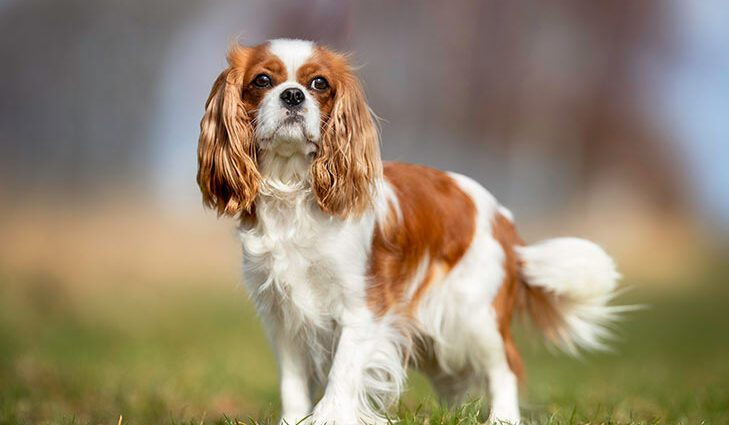Contents
Cavalier king Charles
Physical Characteristics
The Cavalier King Charles Spaniel has short legs, a small round head with round, brown or black eyes, long ears that hang down the sides of the face.
Poil : soft like silk, one-color (red), two-tone (black and red, white and red), or tricolor (black, white & red).
Size (height at the withers): about 30-35 cm.
Weight : from 4 to 8 kg.
Classification FCI : N°136.
Origins
The Cavalier King Charles Spaniel breed is the result of crosses between the King Charles Spaniel the Pug (called Pug in English) and the Pekingese. She received the great honor of being given the name of the sovereign who made him so popular: King Charles II who reigned over England, Scotland and Ireland from 1660 to 1685. King Charles II even let his dogs run inside the Houses of Parliament! Even today, this little spaniel reminds everyone of Royalty. The first breed standard was written in 1928 in Great Britain and it was recognized by the Kennel Club in 1945. It was from 1975 that France got to know the Cavalier King Charles.
Character and behavior
The Cavalier King Charles is a great companion for the family. It is a happy and friendly animal who knows neither fear nor aggression. This breed is generally receptive to training because it knows how to listen to its master. His fidelity is illustrated by the tragic story of the dog of the Queen of Scots who had to be driven away by force from his beheaded mistress. He died shortly after …
Common pathologies and illnesses of Cavalier King Charles
The Kennel Club of Great Britain reports an average lifespan of 12 years for the Cavalier King Charles breed. (1) Mitral endocardiosis, a degenerative heart disease, is the main health challenge today.
Almost all Cavaliers suffer from mitral valve disease at some point in their life. Screening of 153 dogs of this breed revealed that 82% of dogs aged 1-3 and 97% of dogs over 3 had varying degrees of mitral valve prolapse. (2) This can appear in its hereditary and early form or later with old age. It causes a heart murmur which can worsen and gradually lead to heart failure. Often, it progresses to pulmonary edema and the death of the animal. Studies have not shown any difference in prevalence between males and females and coat colors. (3) Hereditary mitral endocardiosis has appeared relatively recently in the breed, a direct consequence of poor breeding stock.
Syringomyélie : it is a cavity which is hollowed out within the spinal cord which causes, as it evolves, coordination problems and motor difficulties for the animal. A magnetic resonance exam of the nervous system can detect disease which will be treated with corticosteroids. The Cavalier King Charles is predisposed to Syringomyelia. (4)
Living conditions and advice
The Cavalier King Charles Spaniel adapts very well to city or rural life. He loves people of all ages as well as other pets in the house. He must take a walk each day to complete indoor play in order to maintain good health, both physically and mentally. Because even small, it remains a spaniel, with a need for daily exercise.










